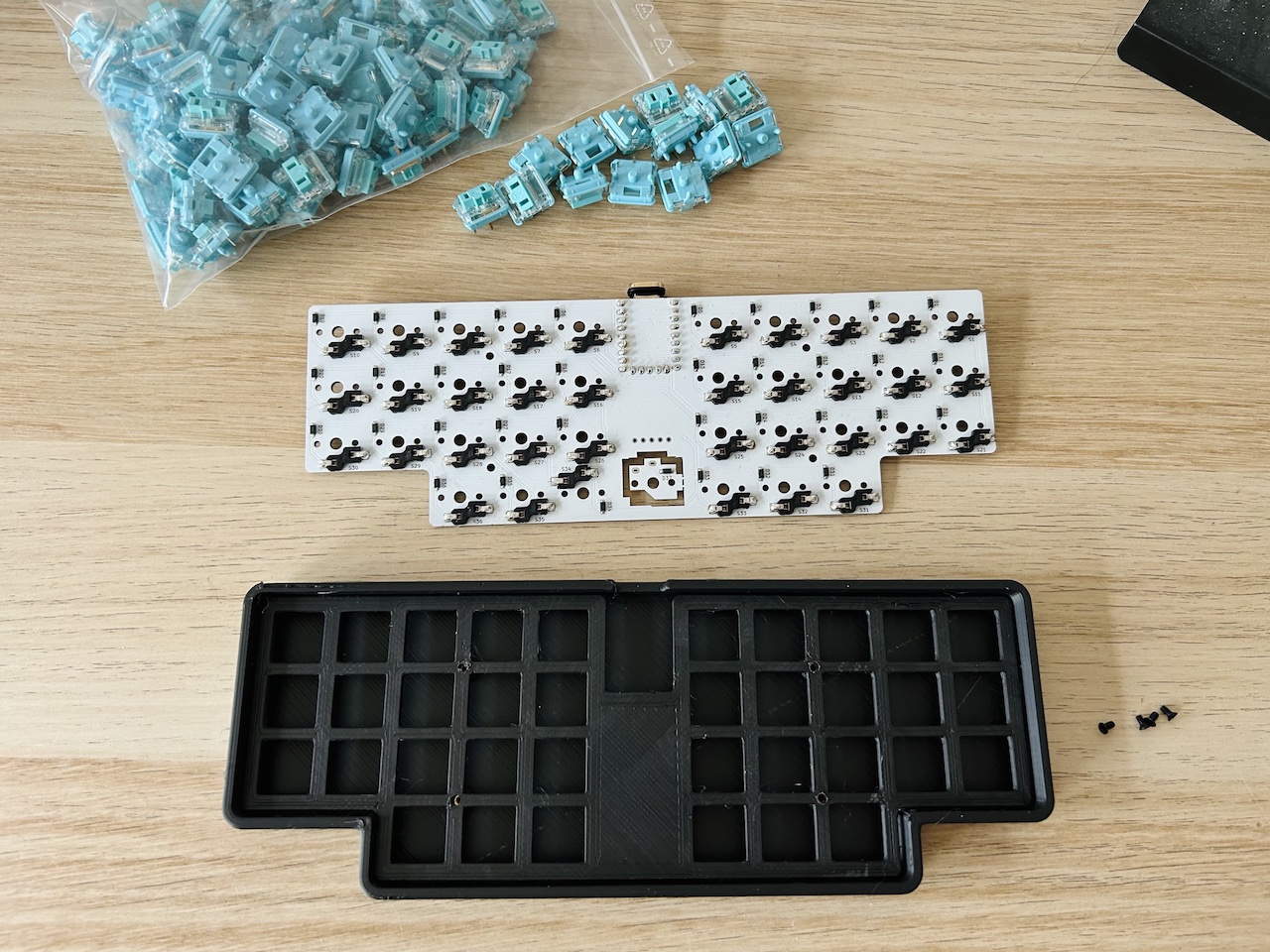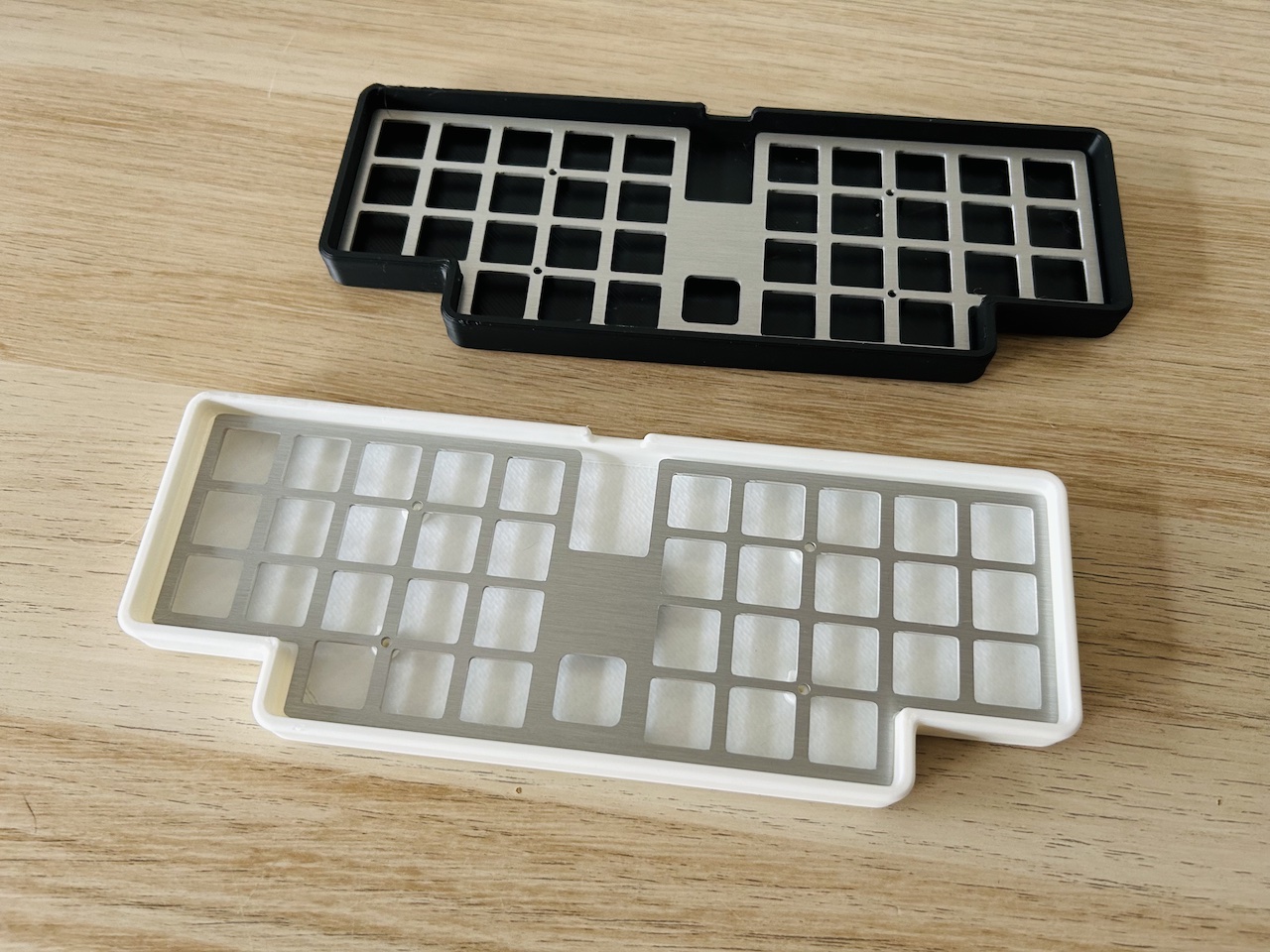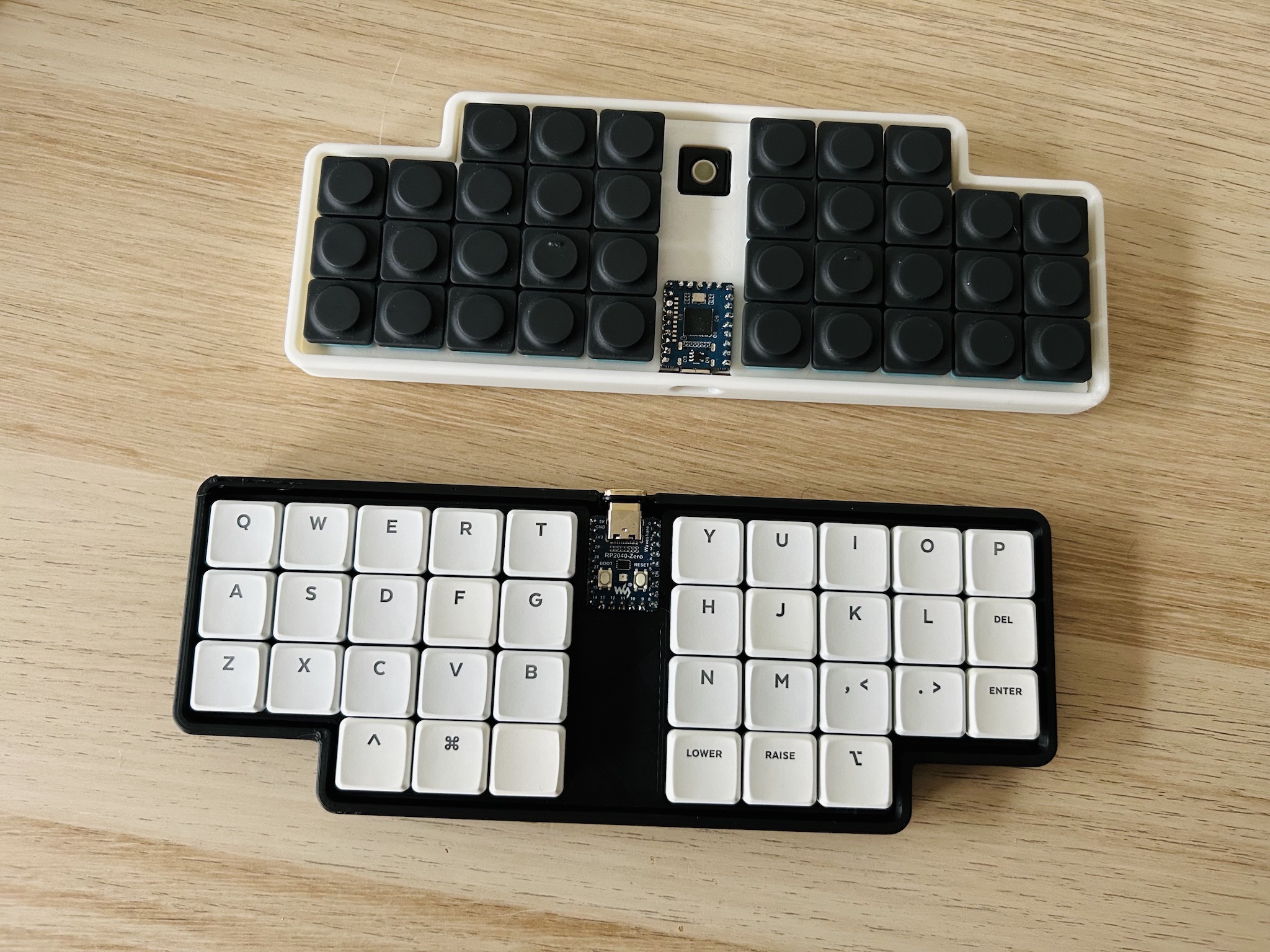Low-pro 36-key hot-swappable monoblock split ortho keyboard with optional Pimoroni trackball support.
To place an order for the Haori36 PCB:
- Use the gerber files in the production/ folder.
- Optionally one can utilize the BOM and CPL files with a PCBA service to avoid manually soldering SMD diodes, which can be challenging to solder by hand. All components are soldered to the bottom side of the board.
The complete PCB project is in the kicad/ folder.
| Quantity | Item |
|---|---|
| 1 | RP2040-Zero & Pin headers |
| 1 | Haori36 PCB |
| 1 | Haori36 plate |
| 36 | Kailh Choc V1 switches |
| 36 | Kailh Choc V1 Hot-swap sockets |
| 36 | 1N4148 diodes (SMD) |
| 1 | Pimoroni Trackball Breakout (optional) |
| 4 | M2x4 heat-set thread inserts |
| 4 | M2x6 screws |
3D print the case with the STL file.
 |
 |
|---|
There are multiple options for the plate:
- 3D print using the STL file (or the no-trackball version).
- Adjust the tolerance settings as needed. As a reference, I set the
Initial Layer Horizontal Expansionto-0.3mmand theHorizontal Expansionfor subsequent layers to-0.1mm.
- Adjust the tolerance settings as needed. As a reference, I set the
- Use PCB material with the plate gerber files, and opt for
1.6mmor2.0mmPCB thickness. - Laser cut with the DXF file.
The folder also contains an editable STEP file for customization.
The Haori36 comes with precompiled VIA-enabled firmware, with trackball enabled by default:
- Flash penk_haori36_via.uf2 to the RP2040-Zero.
- Load the via.json file in
Designtab for VIA configuration.
The firmware source is located under firmware/QMK/. The trackball settings can be adjusted in rules.mk and config.h.
Copyright (c) 2024 Penk Chen. All rights reserved.
All files are licensed under MIT license, see the LICENSE for more information.

